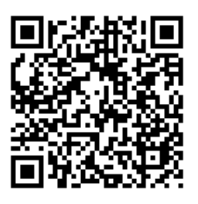Gold used in industrial applications recorded a 12% y/y rise in Q4, a reversal from the y/y falls seen during the previous three quarters. This resulted in total annual demand of 298t in the sector, a 4% fall compared to 2022.
Electronics, the dominant category of industrial gold demand, was weak throughout the year in a challenging economic environment. This was also reflected in the performance of the major chip manufacturers: Samsung, for example, expects to post a 35% drop in operating profit during Q4,1 while the world’s largest manufacturer – Taiwan Semiconductor Manufacturing Co Ltd – is expected to report a 23% drop over the same period.2
Consumer electronics demand was notably weak throughout much of 2023. Smartphone shipments, for example, declined by ~3% y/y to 1.17bn units in 2023 – the lowest full-year volume in a decade.3 However, the sector seemed to experience some recovery during the latter part of the year: consumer demand picked up and the elevated inventory levels of Q1 were run down, to the extent that stocks had to be replenished in the final quarter. There is optimism that 2024 will see a further recovery.4
Electronics
Gold used in the electronics sector rose by 14% y/y to 66t during Q4. While this was comfortably the best quarter of 2023, the figure is flattered by comparison with Q4’22, which was notably weak in what is traditionally this sector’s strong demand quarter.
The wireless sector was a major driver in recovering demand during Q4. Factory utilisation rates reportedly improved, rising from 20% to 30% during Q4’22 to between 60% and 70% in Q4’23. This was driven by smartphone demand as new devices were launched during the quarter, with particular strength in demand for low- and mid-range models. Huawei, for example, has reported strong demand for its Mate 60 Pro device in China.5 5G smartphones also continue to gain in popularity around the world, with penetration rates increasing from 48% in 2022 to 59% in 2023, with a similar rate of increase forecast for 2024. Two areas of promise for the future are the recently launched Wi-Fi 76, which is predicted to significantly boost the speed and stability of wireless connections, and increasing demand for Low Earth Orbit Satellites (LEOS),7 which some manufacturers expect to increase in number from 7,500 to 12,500 by 2027. Both applications require reliable high-end wireless infrastructure, making gold a crucial component.
The Light Emitting Diode (LED) sector continued to experience challenges during Q4. Demand for lighting – continuing the trend from recent quarters – remained weak and is unlikely to see any level of recovery before the second quarter of 2024. Backlight applications showed some improvement, with output increasing slightly. Demand for high-end 3D sensors, which have generally been a positive component of the LED sector in recent quarters, was also hit by the ongoing malaise in consumer electronics demand and was weaker than expected. New technologies, such as mini- and micro-LEDs (which generally require less gold than traditional LEDs and in some cases contain no gold) continued to make inroads across various applications, although uptake has been slower than originally forecast because of production challenges and increased costs.
Gold demand in the memory sector recovered during the quarter. DRAM manufacturers have continued their strategy of controlling utilisation and output to avoid an excessive build-up in inventories. Micron, for example, reportedly reduced its inventory to a standard eight-week holding and increased its chip output by 14% during the quarter. Demand was supported by the launch of new smartphone models during the quarter, as well as healthy demand from AI and cloud computing applications. Indeed, the supply chain in the PC and smartphone markets is reportedly back to healthy levels, all of which bodes well for 2024.
Gold used in Printed Circuit Boards (PCBs) saw y/y decreases during the sector’s traditional low season. Demand in automobile and mobile industries, along with memory modules, all saw quarterly growth but remained below Q4’22 levels. However, there were areas of relative strength, including in AI servers and LEOS applications, which will likely drive some growth in the coming quarters. 2024 is expected to be a year of change within the sector as manufacturers make large investments into South East Asian facilities such as Thailand and Korea.8 This is unlikely to impact gold demand directly, but it does represent a considerable logistical change for many of the world’s largest PCB manufacturers.
Despite another challenging year in the electronics industry 2023 closed on a few positive notes. While the most recent World Semiconductor Trade Statistics Inc (WSTS) figures suggest that the semiconductor industry will have contracted by approximately 10% in 2023, they also forecast a fairly rapid recovery of ~13% in 2024 as the memory sector rebounds.9
At the aggregate level, all four major electronics fabrication hubs around the world recorded increases in gold demand during Q4 (albeit against notably low Q4’22 data): Mainland China and Hong Kong SAR - 17.5t (48%); South Korea - 6.4t (3.8%); Japan – 18.6t (9.4%), and the US17.4t (7.2%)
Other industrial and dentistry
Other industrial and decorative demand in Q4 increased by 5% y/y, mainly thanks to the ongoing recovery in China. However, demand in Italy fell as the accessories sector shifted to different plating options. India saw a flat quarter as high gold prices impacted gifting demand, which in turn limited demand for plating. Dental demand fell by 3% – slower than in the past and chiefly reflecting resilience in Japan, where a slump in palladium prices boosted demand for specialist dental alloys.


